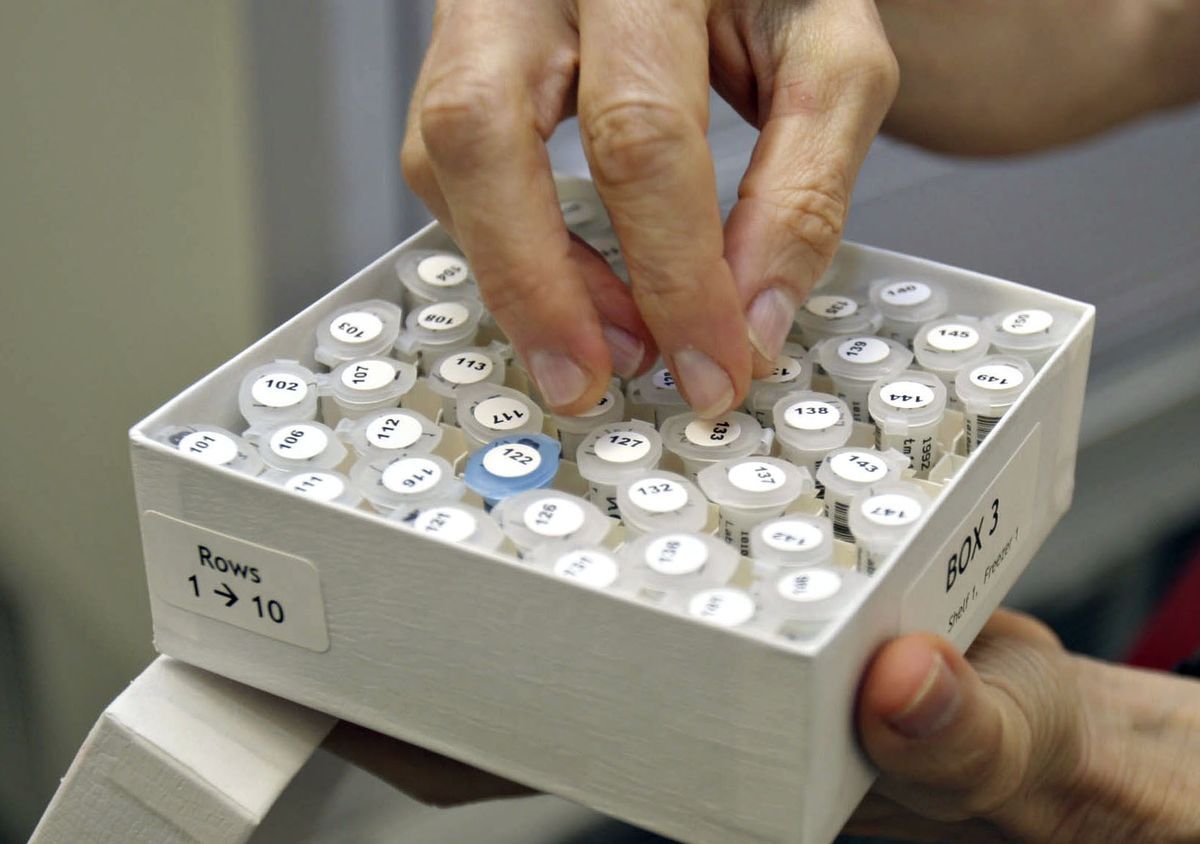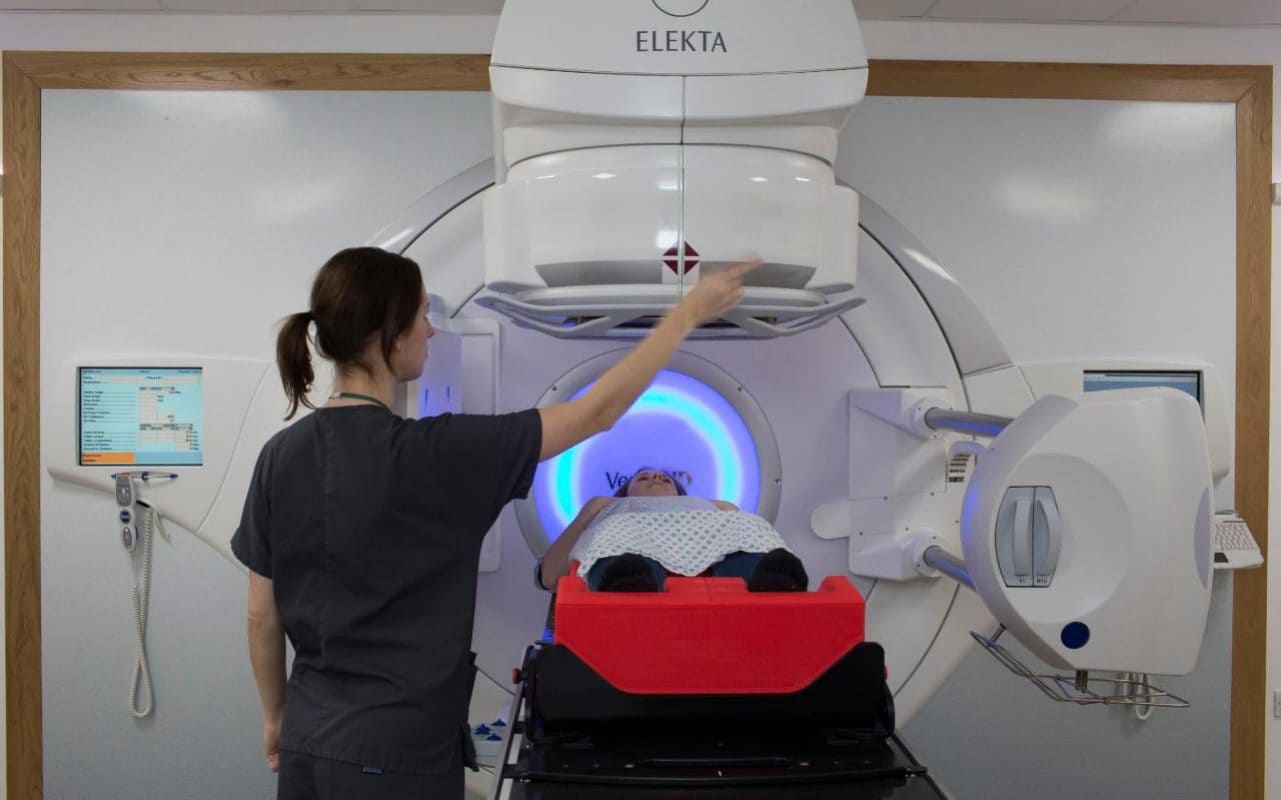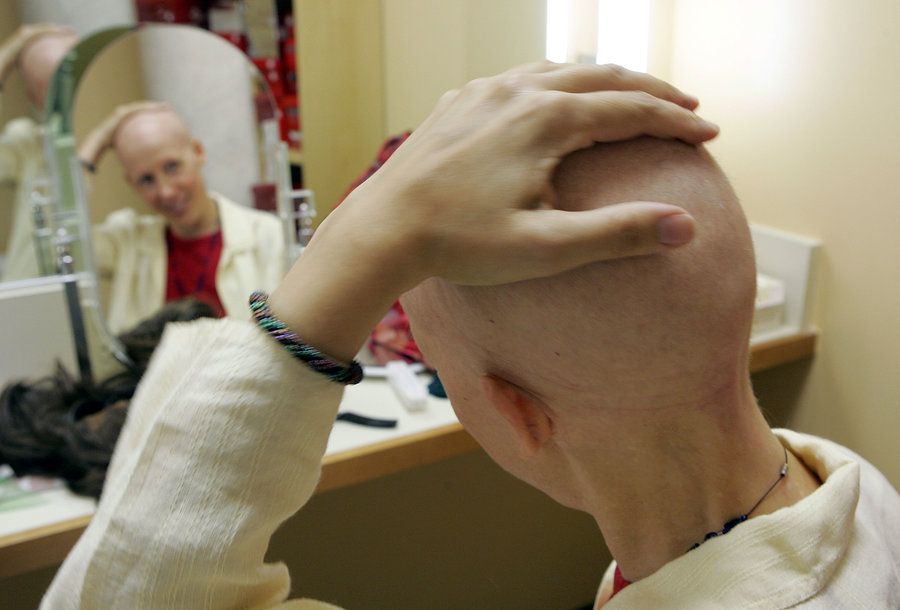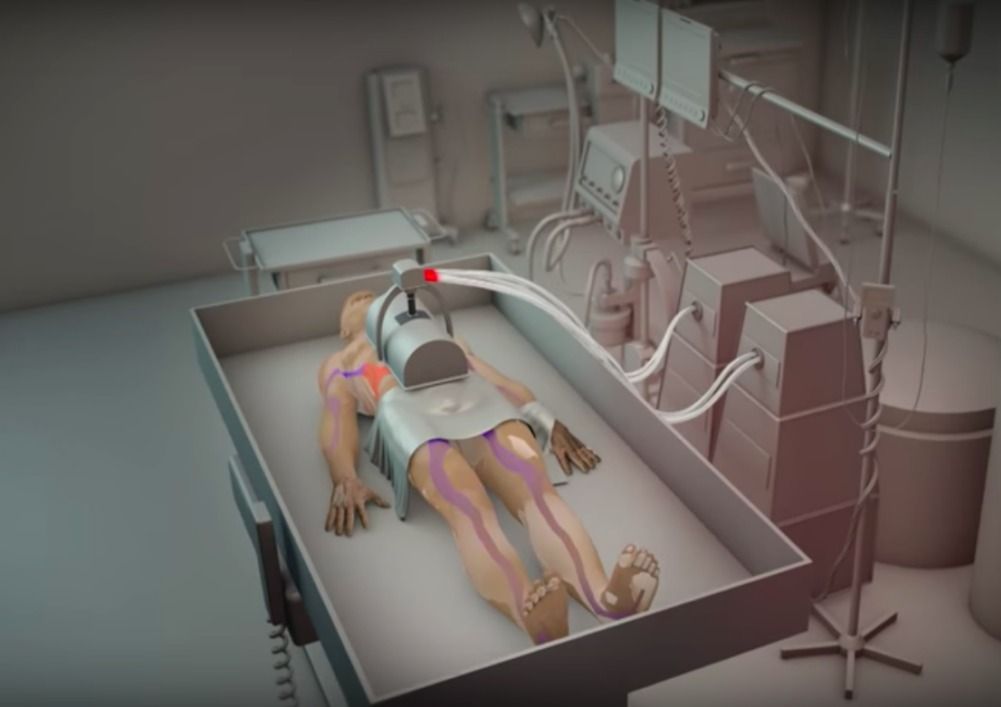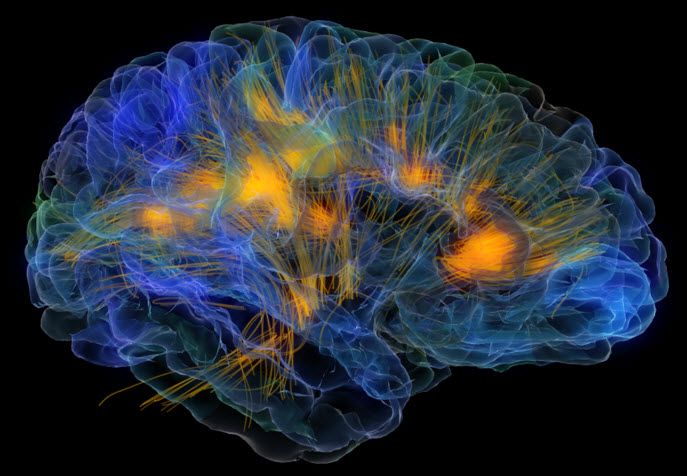Archive for the ‘biotech/medical’ category: Page 2382
Mar 20, 2018
Bioquark Inc. — Senior Care — Reversal Of Age-Related Diseases — Ira Pastor
Posted by Ira S. Pastor in categories: aging, bioengineering, biological, biotech/medical, disruptive technology, DNA, futurism, genetics, health, science
Tags: aging, anti-aging, bioquark, biotech, eldercare, health, healthspan, Life extension, lifespan, senior care, wellness
Mar 19, 2018
Retinal patch with stem cells treats macular degeneraiton
Posted by Genevieve Klien in categories: biotech/medical, life extension

March 19 (UPI) — Researchers in California have developed a retinal patch with stem cells to improve the vision of people with age-related macular degeneration.
In a clinical trial, researchers at the University of California Santa Barbara implanted the stem cell-derived ocular cells in two patients over the course of 12 months, publishing the results of the study Monday in the journal in Nature Biotechnology.
Continue reading “Retinal patch with stem cells treats macular degeneraiton” »
Mar 19, 2018
MRI for all men suspected of prostate cancer could save thousands of lives
Posted by Genevieve Klien in category: biotech/medical
G iving all men with suspected prostate cancer an immediate MRI scan would save thousands of lives a year, the results of a new study suggest.
A trial by British scientists found the comprehensive scan was 12 per cent more likely to detect dangerous tumours than the traditional biopsy, and that the number of men who undergo a biopsy needlessly could be reduced by 28 per cent.
Every year more than 120,000 men in the UK undergo a biopsy, which involves inserting an ultrasound probe into the affected area to take a sample of cells from the prostate that might contain cancer.
Continue reading “MRI for all men suspected of prostate cancer could save thousands of lives” »
Mar 19, 2018
Injectable Body Sensors Take Personal Chemistry to a Cell Phone Closer to Reality
Posted by Roman Mednitzer in categories: biotech/medical, chemistry, health, mobile phones, wearables
Editor’s Note: The American Chemical Society is also issuing a press release today embargoed for 5am Eastern Time that can be requested at newsroom@acs.org or call 504−670−6721.
NEW ORLEANS, March 19, 2018 — Up until now, local inflammation and scar tissue from the so-called “foreign body response” has prevented the development of in-body sensors capable of continuous, long-term monitoring of body chemistry. But today scientists are presenting results showing tiny biosensors that become one with the body have overcome this barrier, and stream data to a mobile phone and to the cloud for personal and medical use.
“While fitness trackers and other wearables provide insights into our heart rate, respiration and other physical measures, they don’t provide information on the most important aspect of our health: our body’s chemistry,” explained Natalie Wisniewski, Ph.D. “Based on our ongoing studies, tissue-integrated sensor technology has the potential to enable wearables to live up to the promise of personalized medicine, revolutionizing the management of health in wellness and disease.” Dr. Wisniewski, who leads the team of biosensor developers, is the chief technology officer and co-founder of Profusa Inc., a San Francisco Bay Area-based life science company.
Mar 19, 2018
Bioquark Inc. — Health:Further — Ira Pastor
Posted by Ira S. Pastor in categories: aging, bioengineering, biotech/medical, business, DNA, finance, health, life extension, science, transhumanism
Tags: aging, anti-aging, bioquark, biotech, cure, health, Life extension, longevity, pharma, wellness
Mar 19, 2018
New therapy cures cancer with just one injection
Posted by Shane Hinshaw in category: biotech/medical
Current cancer therapies have terrible side effects and aren’t always effective. And with things like radiotherapy and chemotherapy, the number of treatments one needs to endure makes side effects progressively worse over time. A new technique developed by researchers at Stanford University uses two agents which when combined, alert the body’s immune system to the presence of cancer, in order to eliminate it.
Just one injection can be effective for a solid tumor. Such a targeted approach could limit nasty side effects and may even be more effective than current therapies. These results were published in the journal Science Translational Medicine. Dr. Ronald Levy was the study’s senior author. He told Medical News Daily, “When we use these two agents together, we see the elimination of tumors all over the body.”
Dr. Levy and colleagues injected minute levels of two “immune-stimulating agents,” into malignant solid tumors in mice. The most remarkable thing is that it treated not only the tumor it was injected into, but distant malignancies at other locations inside the body. Researchers believe it’ll be able to treat all different kinds of cancer. Using T-cells to kill cancer has long been a driving focus of immunotherapy.
Continue reading “New therapy cures cancer with just one injection” »
Mar 19, 2018
Just Call Cryogenic Suicide What It Is: Selfie Death
Posted by Derick Lee in categories: biotech/medical, neuroscience, transhumanism
Even if a client isn’t fearful of death and doesn’t buy into the preposterous idea that his consciousness can be revived (scientists aren’t even close to figuring out how memories could possibly be preserved), having his brain preserved and uploaded as a “program” based on the idea that it is worth enough to have future generations maintain it, even interact with it, is the height of arrogance. It’s a self-centered ethos that seeks attention and admiration even after death. Transhumanism involves faith in science, sure, but that’s merely the means to the end.
Transhumanism is a religion of self, embedded with the doctrine of sola feels, all bundled into one medical procedure that literally ends your life.
Continue reading “Just Call Cryogenic Suicide What It Is: Selfie Death” »
Mar 18, 2018
The Limits of Neuroplasticity in the Brian
Posted by Nicholi Avery in categories: biotech/medical, computing, engineering, mapping, neuroscience
One of the #brain’s mysteries is how exactly it reorganizes new #information as you learn new tasks. The standard to date was to test how neurons learned new behavior one #neuron at a time. Carnegie Mellon University and the University of Pittsburgh decided to try a different approach. They looked at the population of neurons to see how they worked together while #learning a new behavior. Studying the intracortical population activity in the primary motor cortex of rhesus macaques during short-term learning in a brain–computer interface (BCI) task, they were able to study the reorganization of population during learning. Their new research indicates that when the brain learns a new activity that it is less flexible than previously thought. The researchers were able to draw strong hypothesis about neural reorganization during learning by using BCI. Through the use of BCI the mapping between #neural activity and learning is completely known.
“In this experimental paradigm, we’re able to track all of the neurons that can lead to behavioral improvements and look at how they all change simultaneously,” says Steve Chase, an associate professor of biomedical engineering at Carnegie Mellon and the Center for the Neural Basis of #Cognition. “When we do that, what we see is a really constrained set of changes that happen, and it leads to this suboptimal improvement of performance. And so, that implies that there are limits that constrain how flexible your brain is, at least on these short time scales.”
It is often challenging to learn new tasks quickly that require a high level of proficiency. Neural plasticity is even more constrained than previously thought as results of this research indicate.
Continue reading “The Limits of Neuroplasticity in the Brian” »
Mar 18, 2018
How Light and Genetics may Treat Brain Disorders in the Future
Posted by Genevieve Klien in categories: biotech/medical, genetics, neuroscience
Imagine being able to treat neurodegenerative diseases and mental disorders such as Alzheimer’s disease, Parkinson’s, epilepsy, PTSD, depression, and anxiety with non-invasive light-based therapy. This is the quest of pioneering scientists and researchers in optogenetics, an emerging field in biotechnology that uses light to control cells in living tissues such as neurons, in order to study brain function.
British Nobel laureate Francis Crick of The Salk Institute for Biological Studies in La Jolla, California put forth the concept of the ability to turn the firing of “one or more types of neuron on and off in the alert animal in a rapid manner” by using light as “the ideal signal” in his paper “The impact of molecular biology on neuroscience” published in Philosophical Transactions of the Royal Society B in 1999. Crick noted that his concept might be somewhat “far-fetched.” Yet as improbable as it would seem to the brightest minds in science before the turn of the century, this idea was proven in a little over half a decade.
In optogenetics, scientists add genetic code to target tissue, typically a neuron, which enables it to make light-responsive proteins called opsins. Gero Miesenböck and Boris Zemelman published a study in 2002 titled “Selective photostimulation of genetically charged neurons” in Neuron. They used opsin from the retina of a fruit fly to make a neuron light-sensitive. A year later, they demonstrated the use of heterologous proteins to sensitize neurons to light [1]. Peter Hegemann, Georg Nagel and other researchers published their discovery of phototaxis and photophobic responses of green algae in 2002 [2]. In August 2005, MIT neuroscientist Ed. Boyden, PhD, along with Karl Deisseroth, Feng Zhang, Georg Nagel, and Ernst Bamberg published in Nature Neuroscience a landmark breakthrough in optogenetics, “Millisecond-timescale, genetically targeted optical control of neural activity.
Continue reading “How Light and Genetics may Treat Brain Disorders in the Future” »
